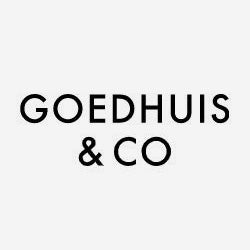
We are always delighted to have news from our man in the Minervois, Graham Nutter of Ch St Jacques d’Albas. Here is his assessment of the 2009 harvest:
2009 has been a mixed year. To begin, we had a cool and wet winter, then a cool spring, a late arrival of summer and finally a rapid catch-up of summer – but a magnificent autumn. And a high quality harvest to reflect the post-July growing conditions.
After 2 years of sub-par rainfalls, we were delighted to have above-average precipitation through the winter of 2008-09 to restore water-tables and give us re-assurance that we wouldn’t see another drought year, with all the consequences of stress on the vines, as seen in 2008 in particular. The cool winter continued through spring though, with a restrained budding and flowering. The arrival of “summer” gave worries too, given its below-average temperatures early on – until mid-July, when summer realised that it was supposed to be warm and arrived with a vengeance. Hot days (but cool nights) through August caused a “catch-up” in volume and maturity of fruit. And summer turned into a “mini drought”, with little rain (just some 25 mm) through end October.
August was pretty brutal in fact, with numerous reports of water stress and sunburn on the grapes; Syrah in particular suffering (we left full top canopy for protection). The speed of evolution in alcoholic maturity, referred to as the “Usain Bolt ” effect locally, worried many, with sugar levels gaining very quickly compared to the phenolic maturation. Comparisons were being made to the 2003 harvest, given the high sugar concentrations.
Into September, grapes were “ripe” as measured by sugars but not phenolically so, with pips still part- green. We waited – and waited, telling pickers to be patient. And then all hell let loose, as different varietals suddenly ripened, but now with the risk of shrivelling of fruit under the lack of water. The whites (our first harvest) had to be picked at very short notice, as were the later-harvested reds, with final ripening being very heterogeneous. A need to react quickly to pick was paramount in 2009. Picking ended 5 October, versus 15 October in 2008.
Grapes came in with high sugars – but also high acidities (unlike 2003). Deep colour characterised the reds. Our oenologue characterised the harvest as being of “very ripe fruit, particularly healthy, each red being exceptionally “varietally distinctive” and a good year for late ripeners (Mourvedre and Carignan). Sulphur was little employed.
Once harvested and destemmed, the fruit went through a “cold bath” (10-12C) for 24-48 hours to rein in the grapes’ warmth and high sugars, followed by a light pumping over twice a day. Cellar work in 2009 was unusually characterised by numerous “délestages” (rack and return) to accelerate slow fermentation when required. With high sugars, the yeasts needed help to do their job.
Our conclusion is that of our 4 red varietals, the Syrah is possibly the best seen since we arrived in 2001 and the Grenache, which took more time to ferment, has taken on fat and is excellent. The young Mouvedre has shown a big jump in quality, while the Carignan (slow to mature as ever) undertook a successful “maceration carbonique”. All very promising.
Graham Nutter
16 November, 2009
Chateau St Jacques d’Albas, 11800 Laure Minervois, France
www.chateaustjacques.com

